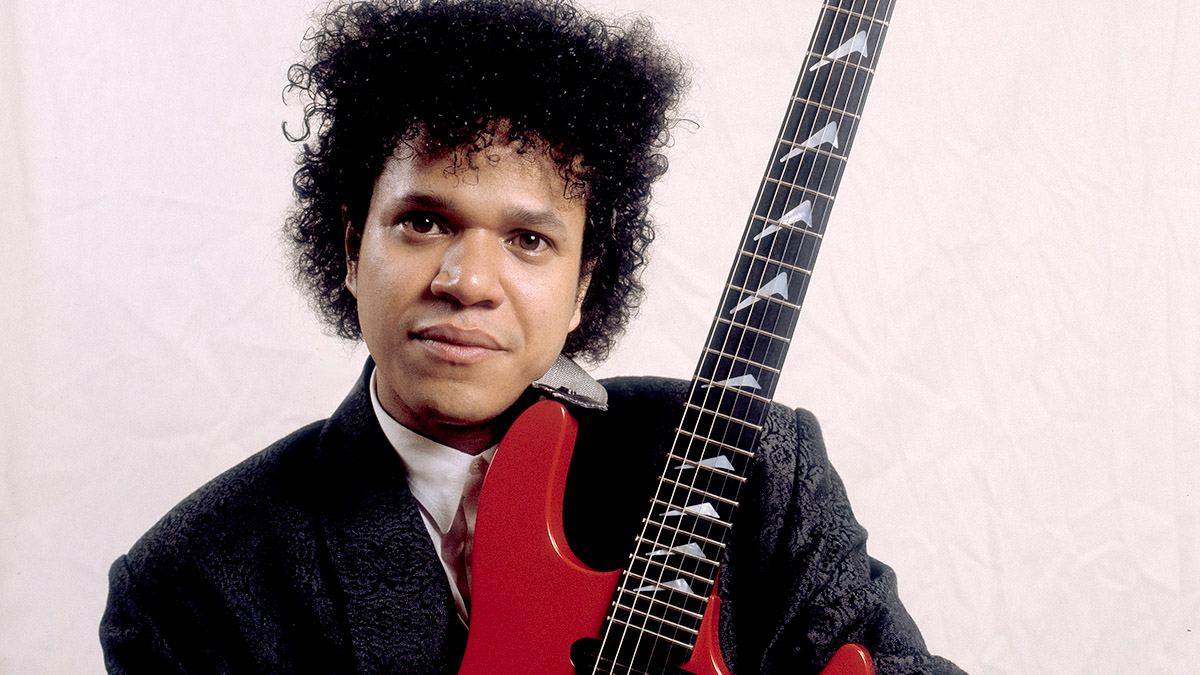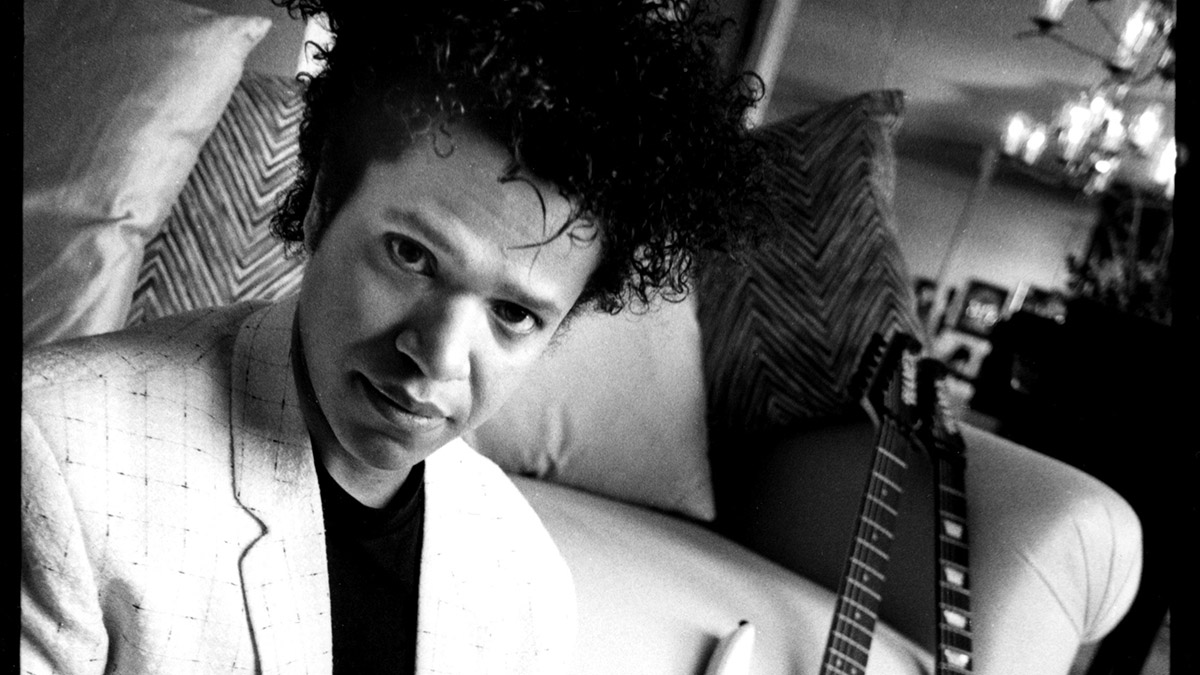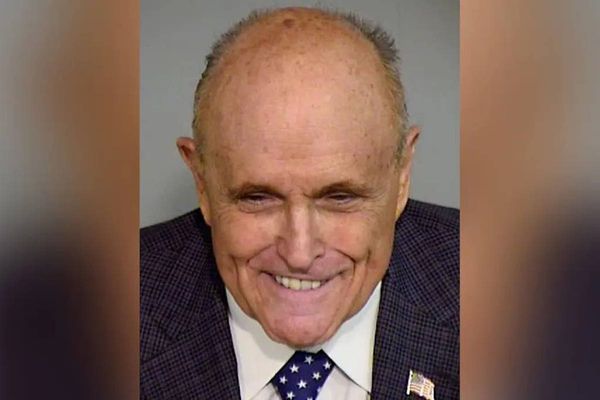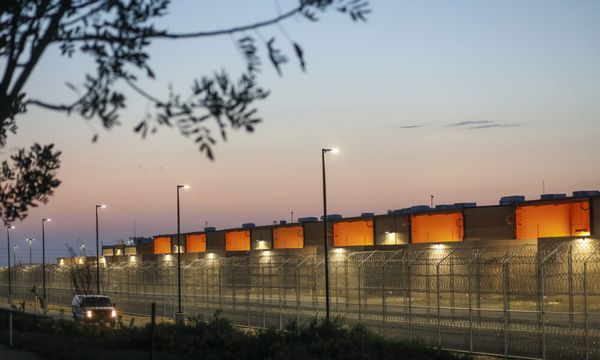
“There’s a time when the phone’s ringing and burning up, then there comes a time when the phone doesn’t ring as much. That’s just reality,” Eddie Martinez says. “I think every guitarist experiences that in one way or another, especially when you’re in the studio session scene. You have your period when you’re hot, and then the time comes when you’re not. It is what it is.”
For the better part of the 1980s, nobody was hotter than Martinez. Thanks to his arena-quaking rhythms and paint-peeling solos on Run-DMC’s groundbreaking single Rock Box, the guitarist’s prodigious skills – everything from walloping crunch to buttery-smooth grooves to whacked-out, explosive leads – was sought out by the likes of Robert Palmer, David Lee Roth, Steve Winwood, Rod Stewart, Mick Jagger and a host of other music legends.
“It was an exciting time,” says the Queens, New York-born guitarist who began his career in the mid-’70s playing with the funk-rock band Labelle.
“It was the culmination of a lot of years when I played with people like Nona Hendryx, George Duke and Stanley Clarke. A lot of situations didn’t call for frontal guitar, but other opportunities emerged that called for me to crank it up. I was kind of bubbling under the surface for a while, and then it all kind of exploded. It was like a sequence of events that just blew my mind.”
Martinez laughs at the serendipity of it all, especially since he admits that he never had a career path mapped out. “In my early days, I just wanted to work,” he says. “It’s funny – back then, the West Coast guys were attracted to the East Coast studio scene, and guys on the East Coast were enamored with L.A. I was listening to what Steve Lukather and Michael Landau were doing. Larry Carlton and all the other guys were tearing it up in L.A.
“I was blown away when I read how they had cartage – their gear would be driven out to the studio. They had their choice of amplifiers and trunks full of guitars. And here I was, on the D train with a gigbag and my Boss pedal. I didn’t have all the toys like those guys.”
As the hit records piled up in the ’80s, his toybox grew. “When I started getting busy, I was like anybody else,” he says. “I got the big Bradshaw rig. That was the thing. I had everything from Fender tweeds to Marshalls.”
One particular Marshall amp remained a constant: a 50-watt Marshall combo that he purchased in 1977 at Music on 48th Street in Manhattan. “That’s the sound on Robert Palmer’s Addicted to Love and a lot of tracks,” Martinez says. “Harry Colby modified it, and it became a beast.”
Martinez’s halcyon days of rocking the charts and big stages are very much in the rearview mirror, and he’s made his peace with that. Now 71, he lives in Portland, Oregon, where he works on music at his own pace and plays gigs with local musicians when the mood strikes.
“I came here 22 years ago after my first marriage broke up,” he says. “I’ve since remarried and I’ve got family out here. I made the right choice to come here when I did, because I saw the writing on the wall. The record industry was changing and budgets were going down.
“Now, people can make records anywhere – they don’t need big studios. Opportunities started drying up. Plus, ageism exists in this business, and that’s a reality. It affected a lot of people I know. I’m certainly not the exception.”
Rock audiences might have first noticed you in 1982, when you replaced Frank Infante in Blondie for what was to be their farewell tour. Was that a tense situation?
“No, actually, it was amazing. I went to the audition thinking there was no way I’d get the gig. I was like, 'Just have fun and make the most of it.' I walked into the studio and everybody in the band was there except Chris [Stein]; he was ill or something.
“Debbie Harry was there, and she was absolutely charming. I dimed the amp and we went through the tunes. It was a blast. Then I got back on the train and went home, and there was a message waiting for me – I had the gig. [Laughs]”
What was so cool was, even before we played a note, Dave came into the room as we were getting our stuff together, and he just thanked us for being available for the session. It was really kind of contrary to the lore of David Lee Roth. He was a total solid cat
Frank told me that one of his big regrets is that he never got to play his Rapture solo live with the band.
“Oh, yeah… I did play that live, but it’s been a while since I heard it. I probably tried to interpret it my own way. I’ve never met Frank, but I’d like to share stories with him. My experience with Blondie was brief.”
A year later came Run-DMC’s Rock Box. How did you get involved with that?
“The call came from Larry Smith, the producer and one of the writers of the track. We were friends and played in bands together. I got more into the session thing, and he immersed himself in what was going on in the streets in South Bronx and Hollis, Queens.
“Larry knew I was a rocker, so he called and said, ‘Why don’t you put some rock shit on this stuff?’ It was just a DMX drum machine and his bass guitar. There might have been some raps and a little keyboard. I had a great time stacking guitars and doing my thing on it.”
What was your guitar and amp combination on Rock Box?
“Believe it or not, I used a Music Man amp with the two 12s. My guitar was a red Hamer. I had a black one when I was with Blondie. It was great, but it got destroyed during a soundcheck when scaffolding fell on it. Joel Dantzig at Hamer sent me a red one, which became the hitmaker. We got some chewy sounds with it.”
I read an interview with you in which you talked about recording Rock Box and how you channeled Brian May for the guitar harmonies.
“I was. I thought of his sound, and I was also treating the guitar parts like vocal harmonies. I layered a lot of guitars to create that sound. All the blowing and harmony stuff, that was me just trying to create an interesting piece of music on this bed of beats and rhymes.”
I thought Rock Box was a good day’s work. I never in a million years knew it was going to be as significant as it’s become culturally
Did you have any idea that the track would shake things up?
“I thought it was a good day’s work. I never in a million years knew it was going to be as significant as it’s become culturally. I thought that I elevated the track and made it more than what it was when I came in that day.”
The video for that song – you’re standing on the roof of a Cadillac and rocking out on guitar. Does it get cooler than that?
“[Laughs] That was hilarious! The Cadillac belonged to Larry Smith. The whole video was crazy, and it was done for so little money. You had Professor Irwin Corey doing this soliloquy at the opening, and then we went into it. We filmed it outside Danceteria – that was cool. The video was an appeal to Middle America – you know, you’ve got the little blonde-haired kid who’s just fascinated by everything. It worked.”
Pretty soon afterward, you played on David Lee Roth’s Crazy from the Heat EP. What was that like?
“David was an absolute gentleman. Totally cool. Those sessions were live, kind of like real old-school record dates. We had John Robinson on drums, Willie Weeks played bass, Edgar Winter and Brian Mann were on synths, Sid McGinness played guitar, Sammy Figueroa did per- cussion... We did it all live at studio A at the Power Station. It was pretty minimal.”
Did either David or producer Ted Templeman direct you for what they wanted, or did they let you go?
“They let me go. What was so cool was, even before we played a note, Dave came into the room as we were getting our stuff together, and he just thanked us for being available for the session. It was really kind of contrary to the lore of David Lee Roth. He was a total solid cat. No star tripping at all.”
Did David ever discuss going on tour with you or any of the other guys?
“He never approached me about it. I don’t think he spoke to anybody in that regard, but I could be wrong. The EP was pretty quirky – Louis Prima tunes and Beach Boys songs. It worked conceptually, but I don’t think he was thinking of touring until he did the full album of rock tunes. That’s when he got Steve Vai and everybody onboard.”
Jason Corsaro had a different way of recording it, especially for the Addicted to Love solo. We spent more time working on the sound of the solo than the actual solo
Riptide marked a significant sonic change for Robert Palmer. What was he looking for when he brought you in?
“It wasn’t really talked about. I’d recorded with [producer] Bernard [Edwards] before; he knew I was adventurous and liked to get big sounds.”
Did they ever refer to the big guitar crunch you got with Run-DMC?
“No, they didn’t. That sound was in my head, though, and the engineer, Jason Corsaro, was able to facilitate that. Jason was unbelievable. It was a big collaboration with everybody. We wanted stuff to sound big and different.”
How did you go about that?
“We had my 50-watt Marshall in there. Jason had a different way of recording it, especially for the Addicted to Love solo. We spent more time working on the sound of the solo than the actual solo. This was at Compass Point. What we did was, we had the cabinet in what would be considered a live chamber.
“Most of the big guitars were cut in this room at Compass Point that was just above the main studio. I’d say the room was maybe 10 or 15 feet square, and the amp was in there. Jason took a feed off the cabinet from the microphone and fed it into a tiny Fostex monitor speaker.
“That got us this real crispy sound; in itself it would sound very strident, but when you blended it with the girth of the Marshall you’d get the definition. That was for the solo only.”

Now, clear something up for me. For years, Andy Taylor from Duran Duran has been credited with that solo.
“You know, I thought that myth had been put to bed. That’s me on the solo, and I did it in one take. Jason Corsaro was there when I did it. He’s no longer here, but [keyboardist] Jeff Bova was around when we were recording it. [Drummer] Tony Thompson, Bernard Edwards, the assistant engineers… I know that I played it. Plus, I don’t think it even sounds like Andy. Not to disparage him – he’s a rocker.
“Andy did play some crunchy rhythm things, but it was after we cut the track and after I did the solo. I like what he played on it. It was really cool, and it contributed to the song. He wasn’t down at Compass Point to do that. I believe he did that in New York at the Power Station. I haven’t seen Andy since the ’90s. I should say I consider him a friend, and I hope he’s healing.”
That solo is pretty great for one take. It’s very bluesy, and you get some good squawks out of your bends.
“My mindset for that solo was the great Billy Gibbons. That’s what I was kind of vibing on – the Reverend.”
Your approach was pretty different on Palmer’s Simply Irresistible. That solo is way shreddy.
“[Laughs] I got away with murder on that. I wanted to do something 180 degrees different from what I did with Addicted. Yeah, I went pretty nuts on Irresistible.”
How did you come to work with Steve Winwood for Back in the High Life?
“I met Steve when he was renting a loft in Soho. I hung out with him; there was a music room with a piano, and I think we played a little bit. Then [producer] Russ Titelman called me to play on some tracks; Higher Love and Freedom Overspill emerged out of one session. Steve is such a gifted artist and musician and an absolute joy to play with. A real music man.”
You played more in-the-pocket stuff on that album.
“Yeah. It’s interesting – I don’t recall him giving me any kind of direction, per se. He was around when I was putting the guitars down, but I was really communicating with Russ. Steve must have liked what he was hearing, so that makes me happy.”
Did you ever get intimidated, like, “This guy played with Clapton”?
“You need to compartmentalize that shit, because a lot of cats don’t get the rock star ego kind of deal. I never came to a session thinking about the veneer of stardom. I just wanted to get to know the artist as a person and what the song is about, and just try to deliver something that elevates the track.”
Robert Palmer was big into metal. I’ll tell you, there was something very special about working with him
At a certain point, did you intentionally pull back from doing a lot of touring?
“Yeah, after my daughter was born in ’86. I toured with Robert Palmer in ’86, ’88 and ’91. Those were big world tours. There was a point in there when I was rehearsing with Rod Stewart to go out on the tour, and I kind of backed out of it at the last minute. I knew that Robert had the Heavy Nova album coming out, and I thought I’d rather play Simply Irresistible than Hot Legs.”
Wow. You quit a Rod Stewart tour before it began?
“I did. It’s just one of those things; I backed out of it. Rod’s a sweet guy. He wooed me to come out on tour and I agreed, and then I decided not to do it. He said, ‘Oh, I bet you’re going out on tour with Robert.’ And at that point, I hadn’t spoken to Robert. I had no idea that I was going to tour with him because I fundamentally said, ‘Bye, Robert, I’m doing this.’ It wasn’t easy leaving that situation.”
You had quite a bond with Robert.
“Oh, yeah. Not only was he a dear friend, but he was also a bad-ass musician. He had such eclectic tastes. We’d listen to Billie Holiday, Jobim, Nat King Cole, Jimi Hendrix, Sepultura – you name it.”
Robert Palmer listening to Sepultura – that blows my mind!
“He was big into metal. I’ll tell you, there was something very special about working with him. He was level-headed and adventurous, and he had a sense of humor. He wasn’t burned by ‘rock star-itis.’
“The collaboration that took place on the albums I recorded with him was magical. I may be known more for other tracks I played on through the years, but working with Robert Palmer was the best of times and where I defined my style.”







